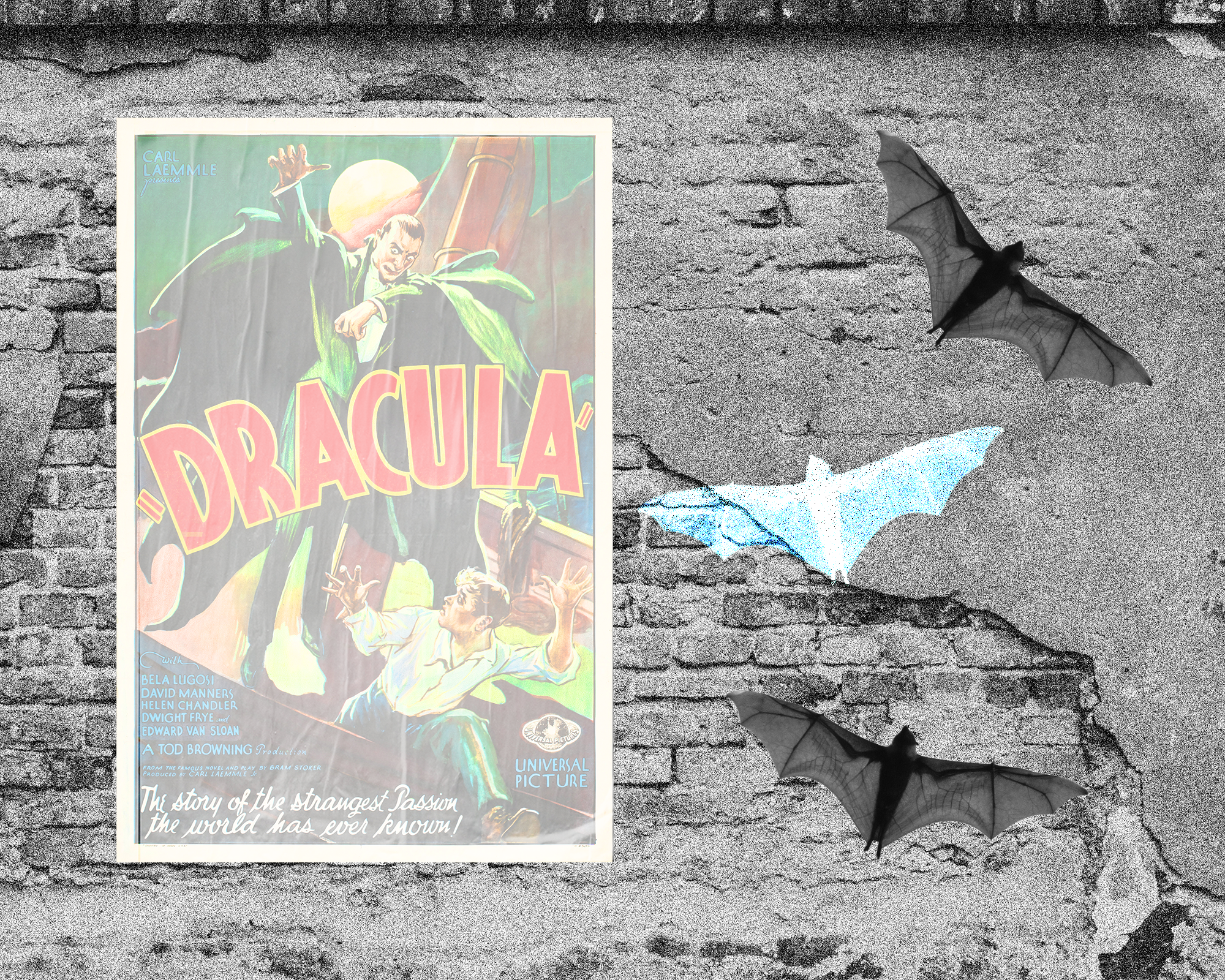There might be spoilers, so read ahead if you dare.
A wise person once said that Universal Studio’s 1931 Dracula is campy. But I did not expect it to be this campy, and by campy, it is the standards that we have for movies in 2022 that would be absolutely revolutionary in 1931. Or by campy, we can go with Susan Sontag’s definition from her 1964 essay Notes on Camp, “The essence of camp is a love of the unnatural: of artifice and exaggeration.” This is meant to demonstrate camp by our own standards when watching this film, not the reactions of horror it garnered in the 1930s when it was released. For context, when this film was released during the depression era, it was part of Universal Studios’ adaptations or anything they could get the rights to on-the-fly and for little money.
Directed by Tod Browning and produced by Carl Lemme Jr., Dracula follows Count Dracula (Bela Lugosi), who makes a real estate deal with and hypnotizes, Renfield (Dwight Frye). He then travels to London and begins to wreak havoc—eventually setting his sights on Mina Harker (Helen Chandler), whose father, Van Helsing (Edward Van Sloan), is a famed doctor and vampire hunter recruited to put a stop to the Count’s antics. Mina also has a best friend, Lucy Westenra (Frances Dade), who eventually dies because of Dracula’s vampirism, but she’s never brought up again outside of being the mythical woman in white.
In any case, I decided to find a free copy online since none of the millions of streaming services had it available without a premium. Upon playing, the music, a symphony from Swan Lake, faded out after the opening credits. I figured there was going to be a transition into more music, but then again, this was a film introduced in the early stages of ‘talkies.’ However, that fact never crossed my mind, and the music never came. I thought it was because my free copy of the film was likely a bootleg and thus coughed up four dollars to Jeff Bezos on Amazon, only to find that this subsequent ‘normal’ copy did not have music either. (This film has, in recent years, been re-released with a score by Philip Glass, although I could not find this copy). That means when Count Dracula, played to exaggerated perfection by Bela Lugosi, pulls his cape over his face in a delayed cut on action, all you hear is a swoosh sound and static background noise.
In a moment of dramaticism like this one that was meant to exude horror and repulsion amongst its audience—I laughed, and then I had to, once again, remind myself that yes, I am watching a horror movie. The shot-reverse-shots between Dracula and Renfield are once again laughable, but in those moments of being horrific, they are a reminder of why this movie remains a fan favorite and classic. The shadow cast over the Count’s face as he towers in a position of power over a sitting Renfield show Dracula’s increasing thirst for blood by virtue of being a vampire, and perhaps to some degree, this shows his desperation.
Additionally, the paradoxical vastness and claustrophobia of the room in his castle—which appears to be shot at a wider angle—shows that though Dracula has much of the control over the situation, what he does have, is beginning to slip. In addition, the objects within the main dining/bedroom of the castle are mostly positioned off-center, adding to that further sense of disconnect, making an audience feel disoriented. Dracula has the power of hypnosis and does hypnotize Renfield, so this camera work is likely makes that apparent to an audience who might not have read the novel. Of course, this idea and subtext are more present in the 1897 novel by Bram Stoker, but it is an interesting one nonetheless. The shadow play is a little overplayed, but it’s really well done, and I love how it makes Bela Lugosi look menacing and emphasizes his facial expressions. The objects within the castle (including Dracula) always seem to be bigger and towering over Renfield specifically.
Our main heroine Mina Harker is an interesting one. When she gets hypnotized by Dracula, she acts robotic, whereas Renfield acts deranged and begins to eat bugs. Nobody, including her father Dr. Van Helsing and her fiancé Jonathan (David Manners), seem to notice—up until Van Helsing opens a jewelry box and notices Dracula’s (delayed) flinch and lack of reflection in the mirror. It takes two or three moments like this, one involving the aforementioned delayed cloak reaction and a crucifix, before words are put into action to stop Dracula.
I think there is an interesting subtext where Dracula could be read as being bisexual or gay. Given that this film was made pre-PCA (Production Code Administration) Code and pre-Paramount decision (referring to the 1948 Supreme Court case US v. Paramount), there would not have been a lot of restrictions in getting the movie passed through anything. At the time, studios controlled their distributions, actors, and theatres. The theatrical poster literally says, “The story of the strangest passion the world has ever known,” with Dracula chasing Renfield. Of course, I could write an entire piece on this subject alone, so we’ll just leave it here for the moment.
There are moments where, once again, the lack of sound is so apparent that one can hear the echoey nature of the set the crew filmed on. Towards the end, when Renfield “falls”—more like throws himself down—a flight of spiral stairs, the camera is positioned so far back that it is easy to see where the set starts and ends. I am not sure if this is meant to be slapstick, but it was probably not considered so in the 1930s. Regardless, it was very exaggerated, and for whatever reason, it felt relatable. Building off of that, there are plenty of meme-able moments. Yes, we are bringing memes into this. I felt that the delayed cuts on the action, as previously mentioned, and the general delayed reactions, were some of the funniest. These moments were honestly why I love this movie and why it’s worthy of a watch still today. I should also mention the amazing bat special effect (it looks like a puppet, so it’s probably some sort of dolley puppet). Kudos to the props and SFX teams on that front.
Of course, some are going to lament its slowness and special effects, but they fail to remember that if it not for the success of this movie, we would not have the entire Universal catalog of horror movies, including Frankenstein (1931), The Wolf Man, The Mummy, The Invisible Man. Dracula ushered in a new era of horror and allowed horror movies to evolve into what they are today. The budget was just under $350k and ushered in $700k at the box office, which is insane to think about when studios and people, in general, were struggling so badly.
In any case, I request that you watch the dang movie before making judgments just because it’s 91 years old, colorless, and music-less. You might be surprised. And frightened.
★★★★★



